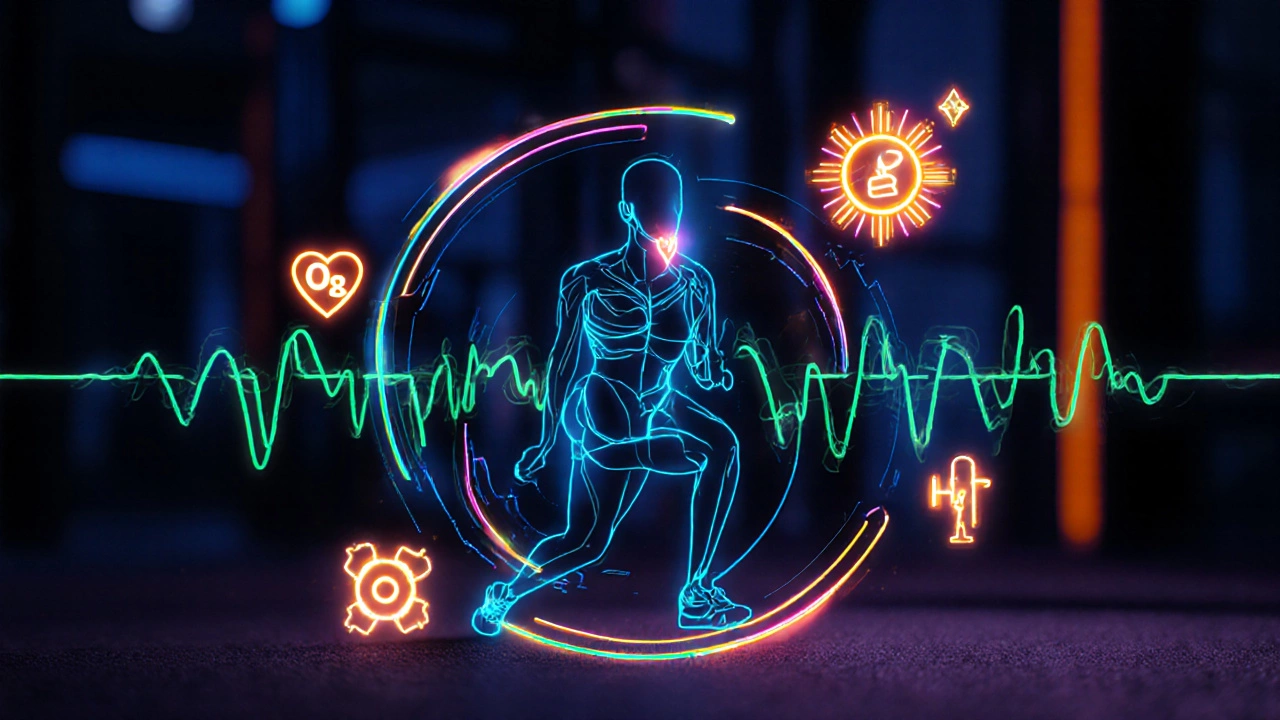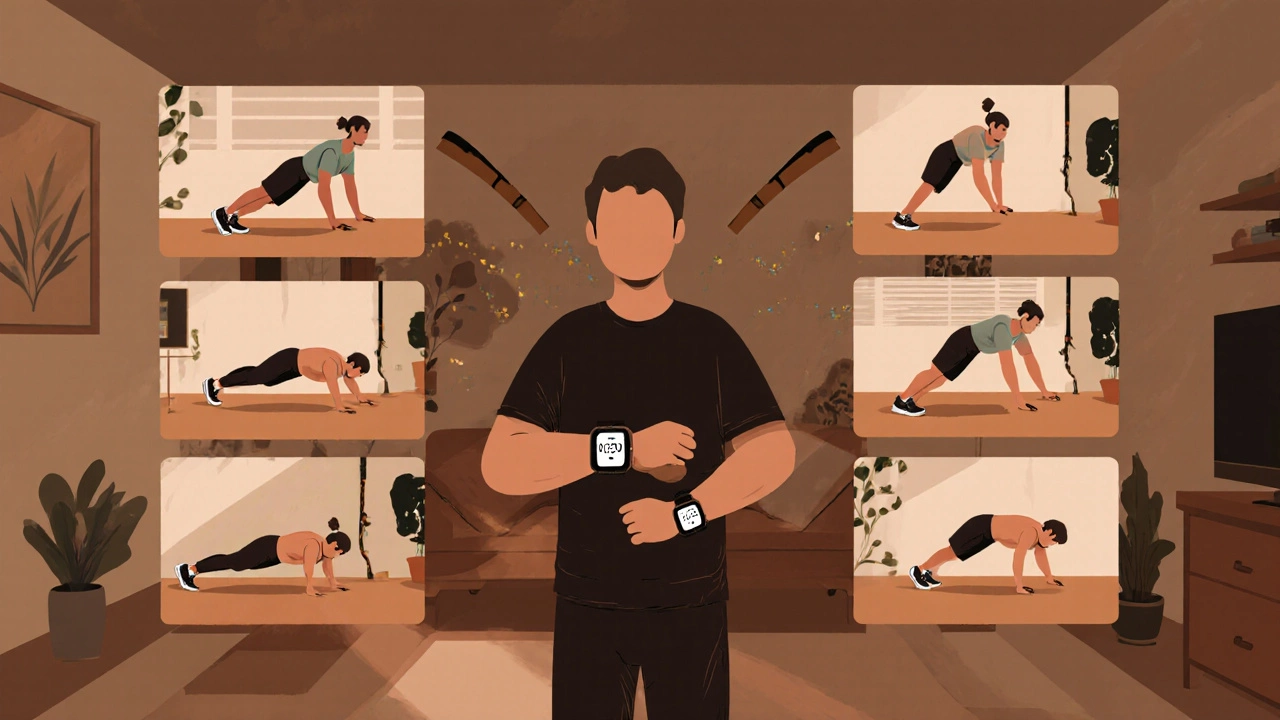Do Mini Workouts Really Work? Evidence & Tips for Home Fitness
 Oct, 21 2025
Oct, 21 2025
Mini Workout Calorie Calculator
How Many Calories Do You Burn?
Estimate calories burned during your mini workout and the afterburn effect (EPOC).
Results will appear here after calculation
Ever wondered if squeezing a quick burst of exercise into a busy day can actually move the needle on fitness? mini workouts promise big results in tiny time blocks, but do they live up to the hype? This guide breaks down the science, the benefits, and the best way to build a real‑world mini‑session you can do at home.
What Exactly Is a Mini Workout?
In plain terms, a Mini Workout is a short, high‑intensity training bout that usually lasts between 5 and 15 minutes. It packs enough stimulus to influence cardiovascular fitness, muscle endurance, and calorie burn, despite its brief duration. The concept grew out of studies on high‑intensity interval training (HIIT) and the need for time‑efficient exercise solutions for people with hectic schedules.
How Mini Workouts Differ From Traditional Sessions
Most conventional workouts run 30‑60 minutes and follow a steady‑state or moderate‑intensity format. Mini workouts flip the script: they rely on brief bursts of maximal effort followed by short recovery periods. This contrast shows up clearly in a side‑by‑side comparison:
| Aspect | Mini Workout | Traditional Session |
|---|---|---|
| Duration | 5‑15 min | 30‑60 min |
| Intensity | 80‑95 % HRmax | 50‑70 % HRmax |
| Equipment Needs | Bodyweight or minimal gear | Varies - often machines, weights |
| Calories Burned (per session) | ~80‑120 kcal | ~200‑400 kcal |
| Afterburn Effect (EPOC) | High (30‑60 min elevation) | Moderate (15‑30 min elevation) |
The Science Behind Their Effectiveness
Three physiological mechanisms make short bursts surprisingly potent:
- Elevated Heart Rate: Hitting 80‑95 % of maximum heart rate forces the cardiovascular system to adapt quickly, improving VO₂ max over weeks.
- Excess Post‑Exercise Oxygen Consumption (EPOC): After a high‑intensity effort, the body burns extra calories for 30‑60 minutes to restore oxygen levels, clear lactate, and repair muscle fibers.
- Hormonal Surge: Intense bouts spike adrenaline and growth hormone, both of which promote lipolysis (fat breakdown) and muscle protein synthesis.
These responses have been documented in peer‑reviewed studies from the Journal of Sports Sciences and the American College of Sports Medicine, showing that as little as 4 minutes of all‑out effort, performed three times a week, can improve aerobic capacity almost as much as a 30‑minute moderate ride.
Key Benefits for Home Fitness Enthusiasts
Because mini workouts need hardly any space or equipment, they fit perfectly into a home routine. Below are the top advantages you’ll notice:
- Time‑efficient training Helps busy people stay consistent when schedules are tight.
- Improved adherence Short sessions feel less daunting, reducing the mental barrier to start.
- Cardiovascular health Boosts heart‑lung capacity similarly to longer cardio work.
- Muscle endurance Bodyweight circuits build stamina without heavy weights.
- Metabolic rate EPOC elevates daily calorie burn, aiding fat loss.

Designing an Effective Mini Workout
Below is a simple, equipment‑free template you can slot into any part of the day-morning, lunch break, or evening. Aim for 4‑6 rounds, each round lasting 30 seconds of work followed by 15 seconds of rest.
- Jump Squats - explosive lower‑body power.
- Push‑up Variations - chest, shoulders, triceps.
- Mountain Climbers - core stability and cardio.
- Plank Shoulder Taps - anti‑rotational core strength.
- Burpees - full‑body conditioning.
Adjust the exercise list based on your goals. If muscle hypertrophy is a priority, swap a cardio‑heavy move (like mountain climbers) for a resistance‑focused one (like dumbbell rows). For pure fat‑burn, keep the pace high and incorporate plyometrics.
When to Add Equipment
While bodyweight alone can be enough, a few pieces of Home Workout Equipment like resistance bands, a kettlebell, or a pull‑up bar can boost intensity without extending time. For example, adding a 10‑kg kettlebell to the squat phase increases muscular overload, sharpening strength gains.
Common Pitfalls and How to Avoid Them
Mini workouts are powerful, but they’re not a magic bullet. Watch out for these mistakes:
- Skipping Warm‑up: Even 3‑minute dynamic moves (leg swings, arm circles) protect joints.
- Neglecting Recovery: High intensity strains the nervous system; aim for at least one rest day between sessions.
- Doing the Same Routine Forever: Muscles adapt quickly; rotate exercises every 2‑3 weeks.
- Over‑relying on Calories Burned: Focus on how you feel, strength gains, and heart‑rate trends rather than the tiny calorie tally of a single session.

Who Benefits Most From Mini Workouts?
While anyone can try them, certain groups see outsized value:
- Office workers: A 10‑minute burst fits between meetings.
- Parents: Short sessions can be done while kids nap.
- Travelers: No‑equipment circuits keep fitness on the road.
- Seniors (with physician clearance): Low‑impact variations improve balance and heart health.
Bottom Line: Do Mini Workouts Work?
Yes-if you match the intensity, frequency, and progression to your goals. They won’t replace a well‑rounded program for elite athletes, but for most people looking to stay active, lose a few pounds, or simply move more, a focused 5‑15 minute effort can deliver measurable improvements in cardio fitness, metabolic rate, and muscle endurance.
Quick Start Checklist
- Pick 4‑5 bodyweight moves.
- Set a timer: 30 seconds on, 15 seconds off.
- Complete 4‑6 rounds.
- Cool down with 2‑minute stretch.
- Log heart‑rate or perceived effort; aim for 8‑9/10 intensity.
Can I do mini workouts every day?
It’s better to give high‑intensity sessions at least 48 hours of recovery, especially if you’re new. Two‑to‑three times a week is a safe starting point.
Do I need a heart‑rate monitor?
Not mandatory, but a wearable helps you verify you’re hitting the target 80‑95 % HRmax range. Even a manual pulse check after a set can work.
Will mini workouts build muscle?
They improve muscle endurance and can stimulate hypertrophy if you add resistance (bands, kettlebells) and progressively overload the load.
How many calories do I actually burn?
A 5‑minute high‑intensity bout burns roughly 80‑120 kcal, but the afterburn (EPOC) can add another 30‑60 kcal over the next hour.
Is it safe for beginners?
Yes, provided you start with low‑impact moves, keep intensity at 70‑80 % max effort, and progress gradually. Always check with a healthcare professional if you have chronic conditions.
